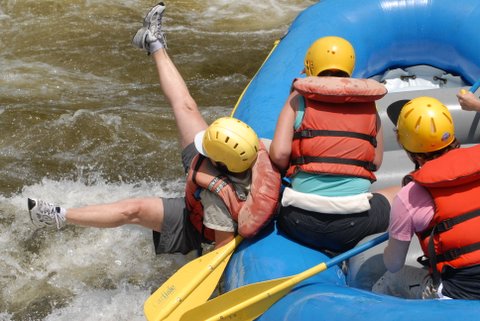
Humans, and I imagine other species as well, like to find order in their lives. We strive for it. If we can find order in our lives we can begin to predict outcomes, and we like that, often for practical reasons. Should I change the date of next weekend’s picnic from Saturday to Sunday because rain is in the forecast? We plan trips to New England in the autumn so we can marvel at the foliage turning from greens to golds and reds, something we are not likely to see in December. This desire for order and predictability seems to have extended to our relationship with the dogs in our lives. I find this inclination at best ironic since we are unable to achieve complete control and order in our own lives and at worst, disturbing given the methods we are willing to use to get that control.
I am not criticizing striving for precision in training behaviors, both to prove the complexity and abilities of our dogs, and also the skills of the trainer. It is when reasons are contrived to justify the use of pain and intimidation to achieve that precision. There are the trainers who will justify the use of these methods because they ‘save the life’ of a dog. Yet few of them seek similar methods to curb their own life threatening behaviors. How many of them have struggled for years trying to drop a few pounds, exercise more, quit drinking or smoking, to stop talking on the cell phone while driving? These behaviors have been shown to lead to increased incidences of accidents or illness which along with taking lives add a financial burden to the rest of society. It’s different when it comes to dogs they will argue. “Is it?” I have to ask.
The need to use shock collars and strangulation to control an animal’s behavior implies a failure on the part of the handler, not the animal. Why have so few bothered to ask why those darn ‘red zone’ dogs ARE red zone dogs. I will venture a guess and say it is not because they were trained using techniques that were respectful of their ability to learn without pain or coercion. Or that they were handled with kindness and consistency.
In the science of ‘chaos’ there is a phenomenon given the name of “sensitive dependence on initial conditions.” Most of us would recognize this as the Butterfly Effect, the idea that the flapping of the wings of a butterfly in Rio will affect the wind currents in Washington DC months later. Anyone using a compass to plot a course knows that even .1 degree of difference in following a route will eventually send them miles away from their target. Living creatures also seem to be affected by this phenomenon. The lack of one particular nutrient in a diet can lead to conditions which may alter the quality of life which is possible for, or the viability of, an animal.
In our attempts to achieve order, control and predictability we may be losing sight of how ‘the sensitive dependence on initial conditions’ plays a role in the lives of dogs nudged off course by a lack of trust in, and fear of, their partners on the journey.





